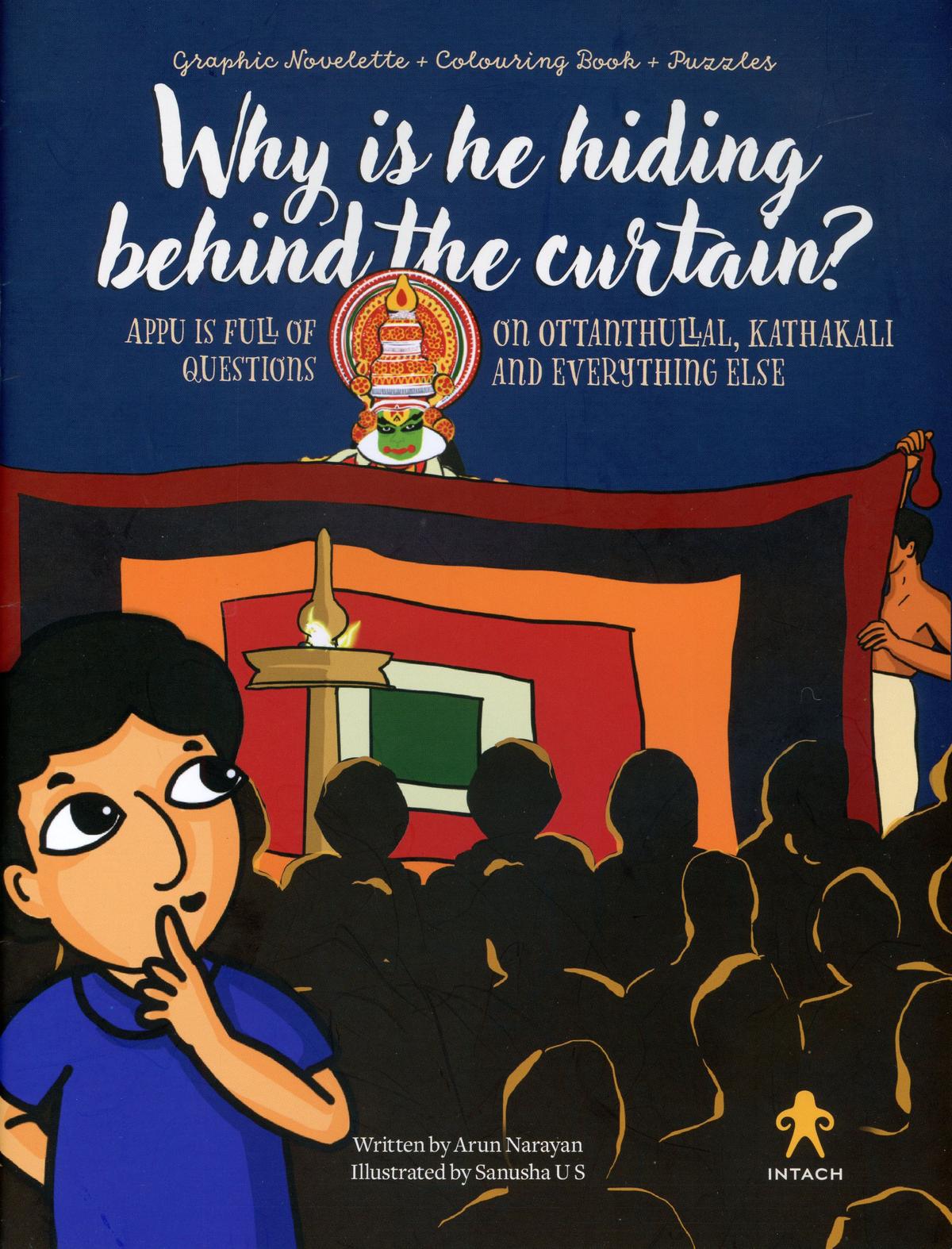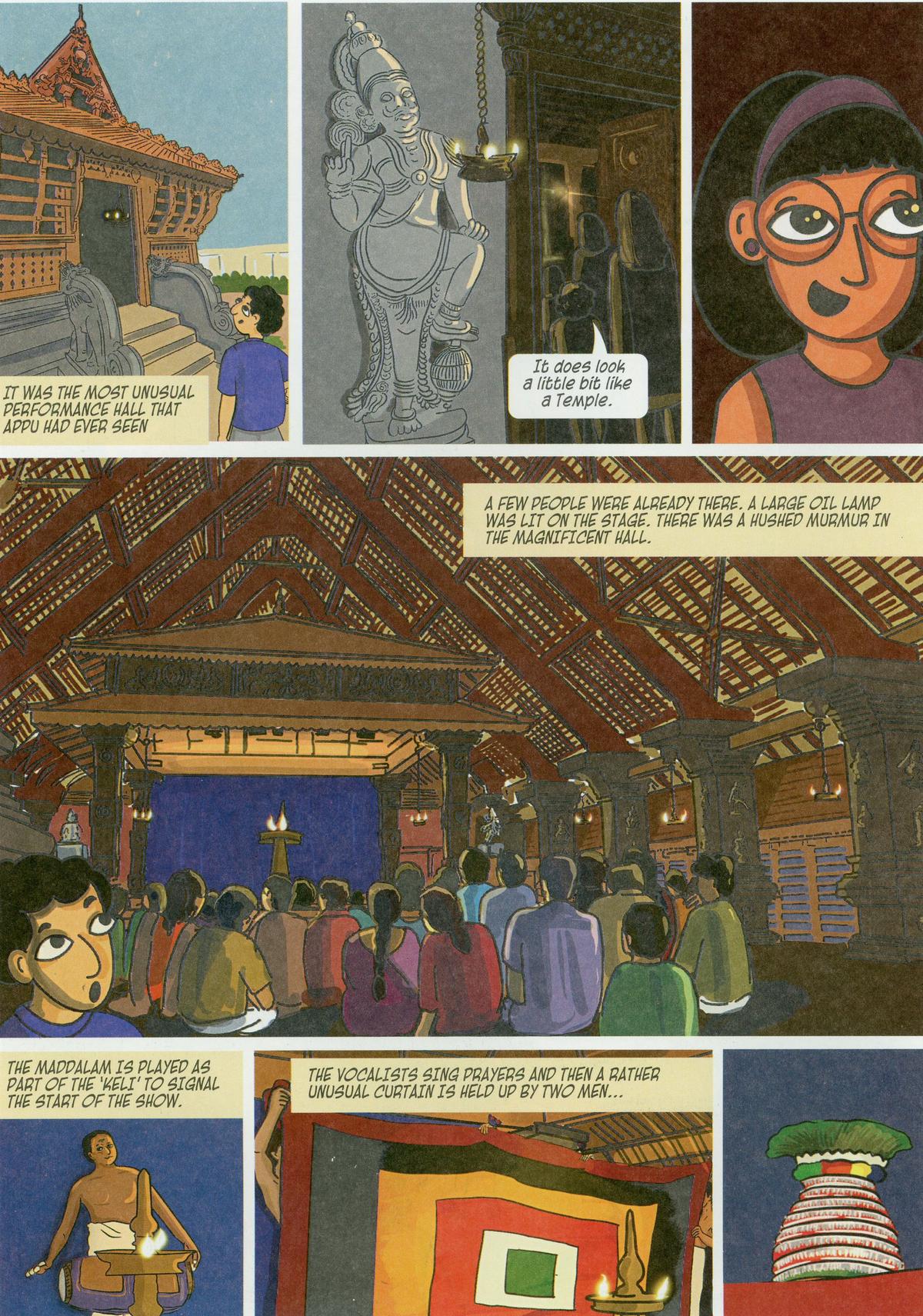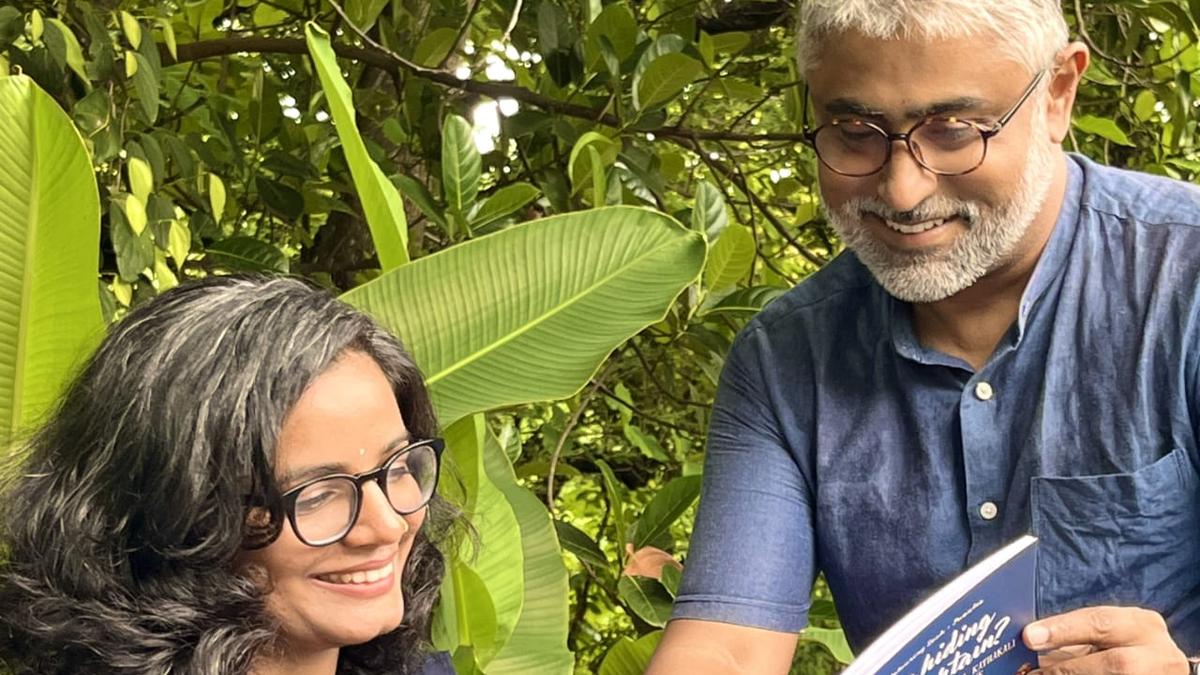Arun Narayan and Sanusha U.S., authors and illustrators of the graphic novelette Why is he hiding behind the curtain?
| Photo Credit: Special Arrangement
A colourful, rectangular piece of cloth held by two people is lowered slightly so that the mask-like face of the performer is visible on stage, then it is pulled up again. The game of hide and seek continues with breathtaking glances of the actor while the percussionists add to the excitement, building excitement for the Kathakali play about to be staged.
This interesting prelude to a Kathakali play is explained in a slim graphic novella, Why is he hiding behind the curtain? Which introduces readers above the age of eight to the colourful artistic heritage of Kerala’s traditional performing arts, Ottanthulal and Kathakali.
Written by Arun Narayan and illustrated by Sanusha US, this comic is a delightful introduction to the art form, possibly the first of its kind in Kerala, if not in India.
Arun, convener of the Palakkad chapter of the Indian National Trust for Art and Cultural Heritage (INTACH), says such a novel idea was on his mind since 2016. He observed that the audience watching traditional art forms mostly comprised senior citizens and there was a dearth of youngsters who did not know about these art forms and did not care to learn.
Architect Sanusha explains that initially the plan was to bring out a graphic novelette on the lives of local heroes, art forms, names of places, etc. The pandemic forced them to take a break. Last year, a jewellery chain approached a design house that Sanusha is associated with to design activity pages or books for children that would keep the kids occupied while the elders shopped. “Instead, we came up with this idea of a graphic novelette that would also have activity pages for children to play, colour, etc., based on the story of the book,” explains Arun.
The result is a 32-page book – with over 300 panels – that takes readers backstage, giving a closer look at the origins, training, make-up and staging of Kathakali plays. It also has activity pages for colouring, puzzles and more.

Why is he hiding behind the curtain?A graphic novel on the performing arts of Kerala. | Photo Credit: Special Arrangement
The reader travels with Appu and his elder sister Anu as their parents take them to Kerala Kalamandalam to meet Kathakali artists, gurus and students. It also features a short narration of a Kathakali play KalyanasougandhikamAn excerpt from the Mahabharata, in which Bhima meets his half-brother Hanuman while searching for a flower asked for by Draupadi.
Arun and Sanusha remember that during a workshop conducted at a school in Bhimanad, Palakkad, they had in their minds the image of their protagonist Appu, who was full of questions about everything he encountered.
Arun says, “We met a teacher and her son. Her son had questions about our work. She told us that her son is always curious. Children are curious by nature. Instead of silencing them, we should encourage them. So we created Appu based on that curious child.”
Both Arun and Sanusha recall their fondness for comics, which fuelled their curiosity about heritage, history, etc. Arun believes that Amar Chitra Katha comics introduced him to Indian mythology and history. Comics like Herge’s Tintin series piqued his interest in world affairs, while the Asterix series made him a history buff.
Arun explains, “Comics are a great way to introduce children to different subjects. Since there is very little information about Kerala’s heritage, nature, folklore, etc. in the form of comics, we decided to work on this to reach out to children.”

The illustrations are presented in detail as seen from a page of the graphic novelette Why is he hiding behind the curtain?
Photo Credit: Special Arrangement
The richly painted panels and detailed story give a clear picture of the art forms. “Children are exposed to a variety of scenes. A flat pictorial depiction may not hold their attention. I have tried to add depth to the panels to make the pictures richer,” says Sanusha.
In the photographs showing the Kuthambalam, where the performances were once held, a lot of effort has been made to give it a 3-D effect and bring it as close as possible to the actual building. Same is the case with the various characters of Kathakali and its practice.
“Traditional art forms are complex and it took a lot of time to narrow it down to the essential elements to talk about it without losing the essence of the art,” explains Sanusha.
Every question asked by Appu during his journey to Kalamandalam and Killikurisimangalam is answered patiently by his parents and other elders. No one dismisses his questions or silences him.
For example, Appu wants to know why Ottanthulal artists wear skirts. Appu and Anu set out on their adventure Why is he hiding behind the curtain?The answer has come out.
This book is published by Here & Then in association with INTACH; Price ₹299
Contact: 9873440216
